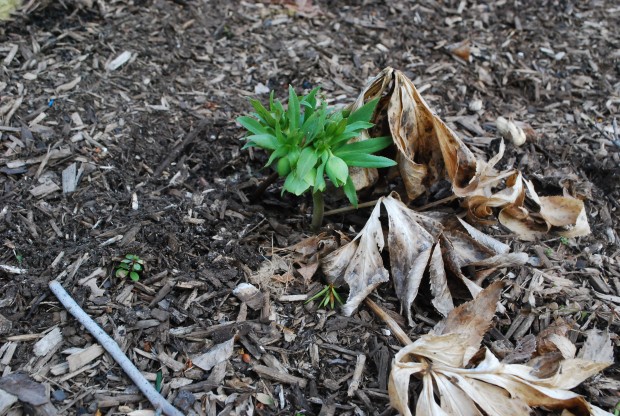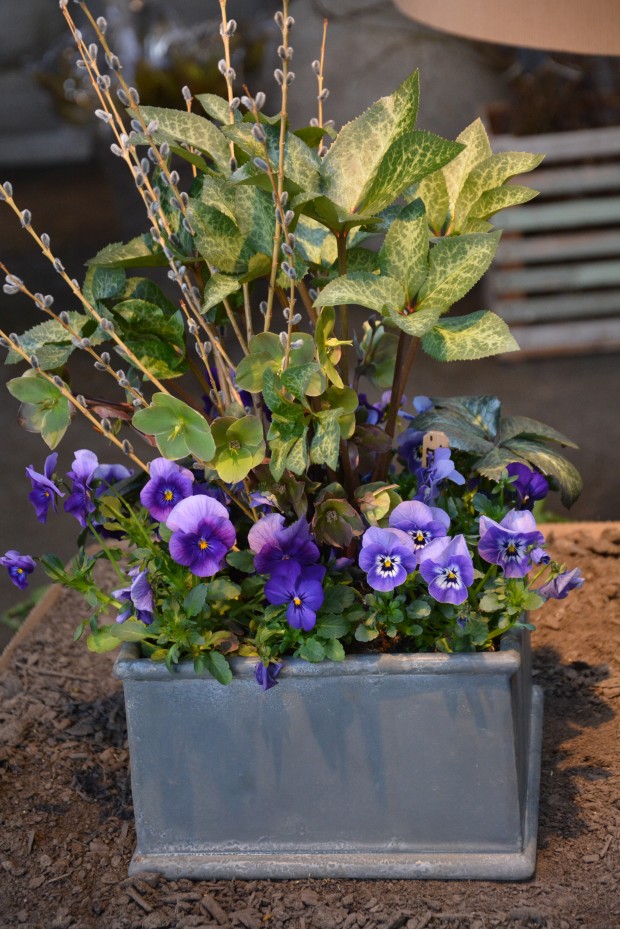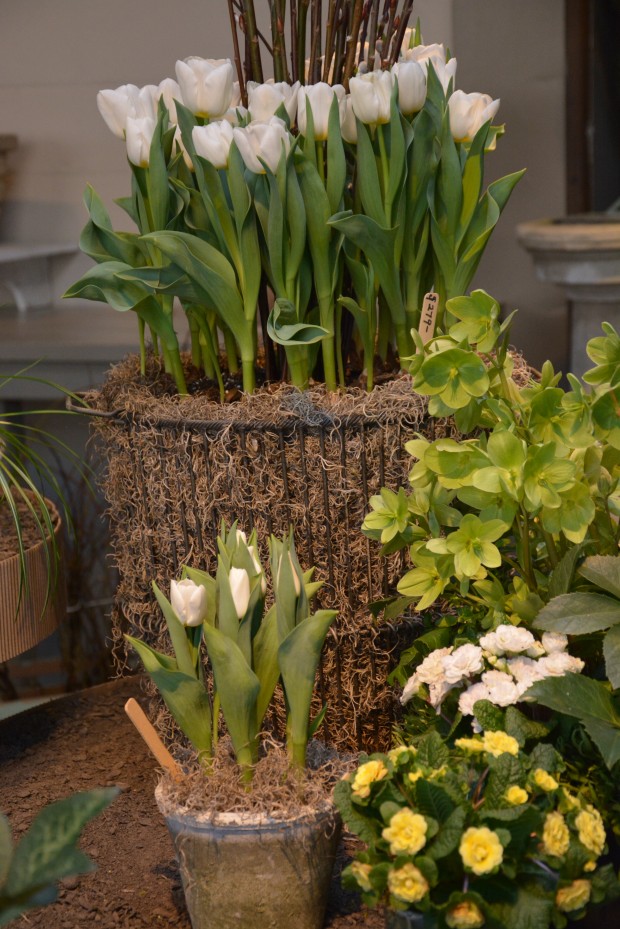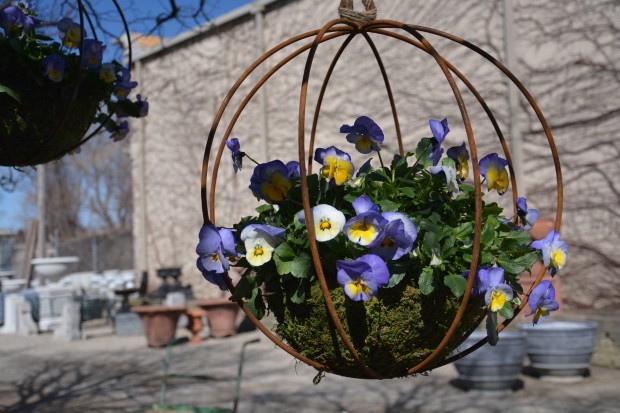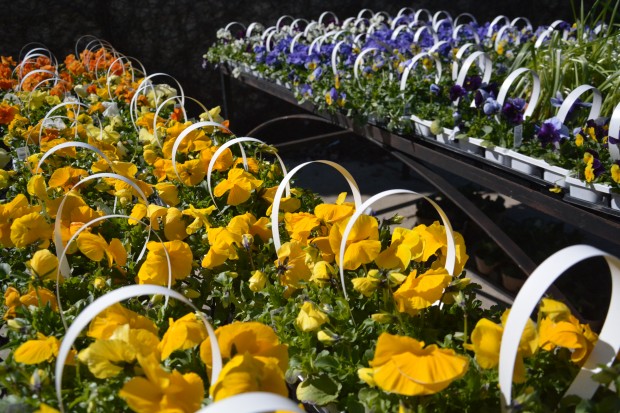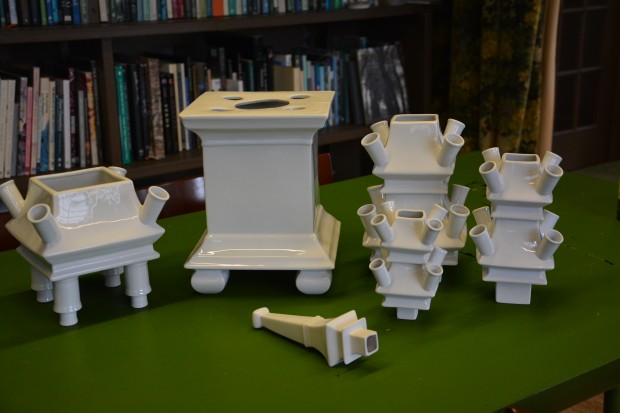 Last fall, a friend who had business in Amsterdam wrote me that he had gone to a shop specializing in handmade Delft china. They made vases in sections, which when assembled, would provide a striking display for tulips. From Wikipedia: “A tulipiere or tulip-holder is an ornate vessel in which to grow tulips, and is usually made of hand-crafted pottery, classically delftware. They are typically constructed to accommodate one single bulb per spout with a larger common water reservoir base. They were not designed as vases for a cut bloom, as is sometimes supposed. While fairly uncommon in modernity, during the 17th century tulipieres were used to grow tulip bulbs indoors and were common pieces of decorative art. After the advent of large-scale global trade in the 17th century, numerous flower bulbs from Asia such as the tulip, crocus, and hyacinth became luxury items in Europe and these bulbs remained an exotic novelty until the end of the 17th century. Large floor-standing pyramid-shaped tulipieres were particularly ornate, and dedicated to the love of a tulip.” My friend and I-we both love tulips. In the ground, and inside in a vase. Both tulipieres were shipped to me-one for me, and one for him.
Last fall, a friend who had business in Amsterdam wrote me that he had gone to a shop specializing in handmade Delft china. They made vases in sections, which when assembled, would provide a striking display for tulips. From Wikipedia: “A tulipiere or tulip-holder is an ornate vessel in which to grow tulips, and is usually made of hand-crafted pottery, classically delftware. They are typically constructed to accommodate one single bulb per spout with a larger common water reservoir base. They were not designed as vases for a cut bloom, as is sometimes supposed. While fairly uncommon in modernity, during the 17th century tulipieres were used to grow tulip bulbs indoors and were common pieces of decorative art. After the advent of large-scale global trade in the 17th century, numerous flower bulbs from Asia such as the tulip, crocus, and hyacinth became luxury items in Europe and these bulbs remained an exotic novelty until the end of the 17th century. Large floor-standing pyramid-shaped tulipieres were particularly ornate, and dedicated to the love of a tulip.” My friend and I-we both love tulips. In the ground, and inside in a vase. Both tulipieres were shipped to me-one for me, and one for him.
 My delft tulipiere arrived last December. It is a tower devoted to the display of the tulip. I loved the shape, stature, and the history surrounding this structure. Many tulipieres dating back to the 17th century were very elaborate, and hand painted. Modern tulipieres are more streamlined, and simple in shape and color. But the idea is the same. A vase that would provide a forum for the tulip would delight gardeners of all persuasions. Though the tulipiere was originally designed to hold tulip bulbs, which would root in the water, grow and bloom, I knew I would only use my tulipiere for cut tulips.
My delft tulipiere arrived last December. It is a tower devoted to the display of the tulip. I loved the shape, stature, and the history surrounding this structure. Many tulipieres dating back to the 17th century were very elaborate, and hand painted. Modern tulipieres are more streamlined, and simple in shape and color. But the idea is the same. A vase that would provide a forum for the tulip would delight gardeners of all persuasions. Though the tulipiere was originally designed to hold tulip bulbs, which would root in the water, grow and bloom, I knew I would only use my tulipiere for cut tulips.
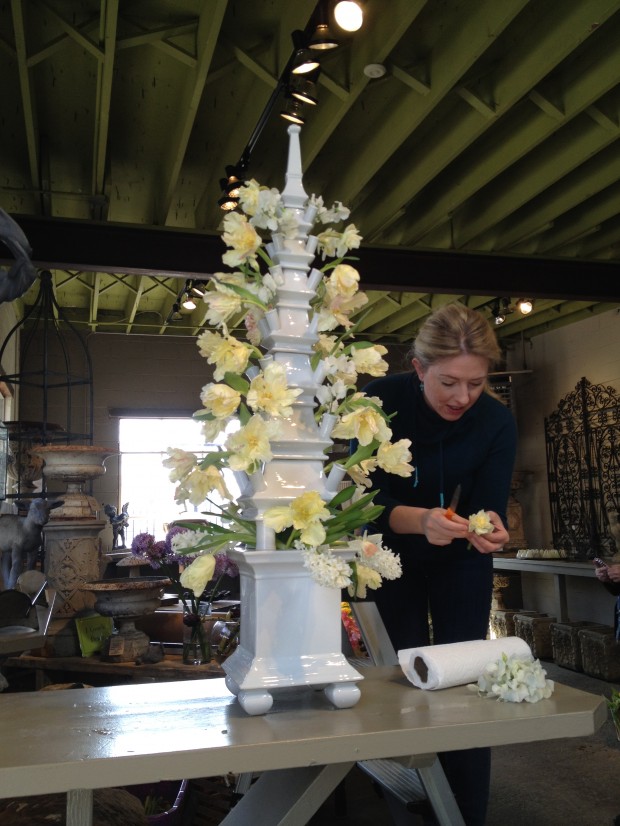 Jody Costello, whose company is known as J Costello Designs, does an amazing job of providing cut flowers for homes and events in our area. She was a participant in our spring fair 2 weeks ago. I can count on her to bring the most amazing array of spring cut flowers. Her buckets of ranunculus, sweet peas, hyacinth, clematis, garden roses and tulips took my breath away. Bunches of cut flowers wrapped in kraft paper and string were flying out of her booth on that Saturday.
Jody Costello, whose company is known as J Costello Designs, does an amazing job of providing cut flowers for homes and events in our area. She was a participant in our spring fair 2 weeks ago. I can count on her to bring the most amazing array of spring cut flowers. Her buckets of ranunculus, sweet peas, hyacinth, clematis, garden roses and tulips took my breath away. Bunches of cut flowers wrapped in kraft paper and string were flying out of her booth on that Saturday.
 On my mind was my tulipiere. As she brought a great collection of cut parrot tulips, I asked her to arrange flowers in that Delft tower with an expression of spring all her own.
On my mind was my tulipiere. As she brought a great collection of cut parrot tulips, I asked her to arrange flowers in that Delft tower with an expression of spring all her own.
 How she arranged spring flowers in this vase was of interest to everyone who came by. This about tulips: the tulips are the mainstay of the spring bulb garden. The cultivars available to plant are just about endless. The very early species tulips are quite persistent. The Darwin hybrids feature giant flower heads in the midseason. The Triumph tulips combine great flowers size with shorter, and more weather resistant stems. There are double flowering early and late tulips. The bunch flowering tulips are a bouquet springing from the ground. The fringed tulips are all about an unusual texture on the edge of the petals. The lily flowering tulips are late, and vase shaped. The viridiflora tulips feature green streaks in the petals. The late flowering tulips extend the season with their tall stems and large flowers.
How she arranged spring flowers in this vase was of interest to everyone who came by. This about tulips: the tulips are the mainstay of the spring bulb garden. The cultivars available to plant are just about endless. The very early species tulips are quite persistent. The Darwin hybrids feature giant flower heads in the midseason. The Triumph tulips combine great flowers size with shorter, and more weather resistant stems. There are double flowering early and late tulips. The bunch flowering tulips are a bouquet springing from the ground. The fringed tulips are all about an unusual texture on the edge of the petals. The lily flowering tulips are late, and vase shaped. The viridiflora tulips feature green streaks in the petals. The late flowering tulips extend the season with their tall stems and large flowers.
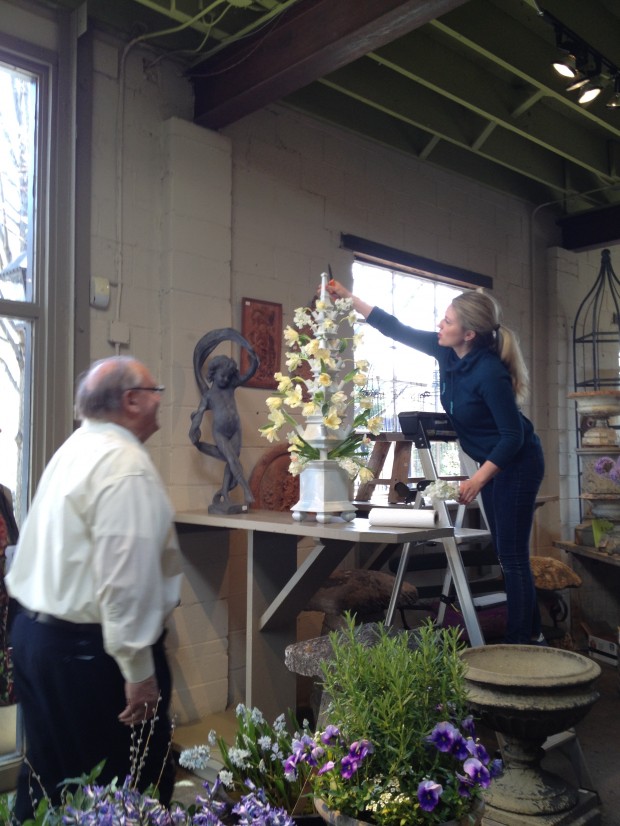 Our tulips in the front of the shop are better than a foot tall right now. The big leaves are a sure sign of spring onm the way. Some say the time between the emergence of the leaves and the bloom is a month. I have never tested this theory, but I can say that once the tulips come up, I am tuned in to their story. Those papery brown orbs that we planted last fall are growing every day now. Our spring has been steady, but slow. My hellebores are just beginning to bloom. The crocus I usually see in March peaked a few days ago. My magnolia stellata is in full bloom today-weeks behind their usual bloom date. Only yesterday did I see forsythia beginning to bloom, and the grass growing greener.
Our tulips in the front of the shop are better than a foot tall right now. The big leaves are a sure sign of spring onm the way. Some say the time between the emergence of the leaves and the bloom is a month. I have never tested this theory, but I can say that once the tulips come up, I am tuned in to their story. Those papery brown orbs that we planted last fall are growing every day now. Our spring has been steady, but slow. My hellebores are just beginning to bloom. The crocus I usually see in March peaked a few days ago. My magnolia stellata is in full bloom today-weeks behind their usual bloom date. Only yesterday did I see forsythia beginning to bloom, and the grass growing greener.
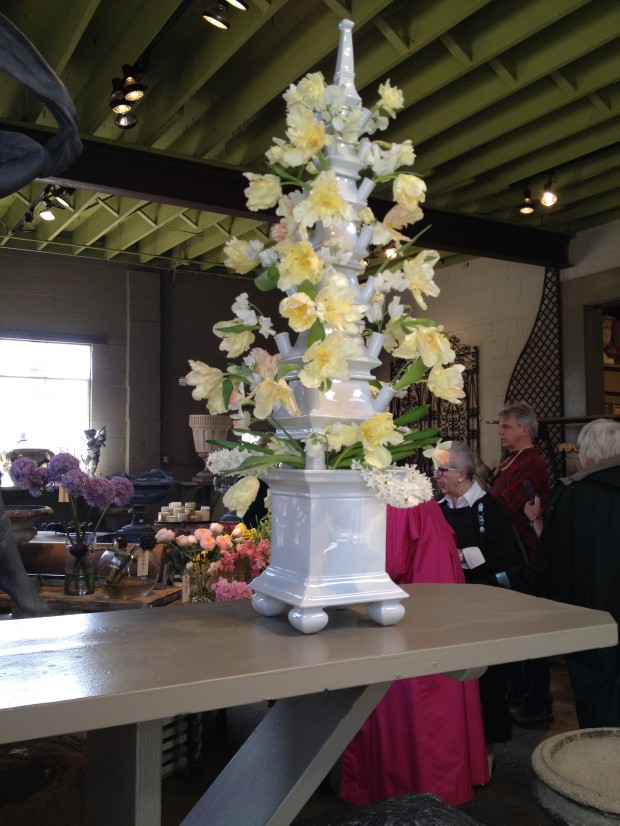 Every gardener in my zone anticipates the spring with great excitement. I am no exception. Our winter has some snow, not record breaking snow, but long and lingering cold. The break in the cold was so welcome. We have had cold mornings, and moderate afternoons. Many layers of clothes in the morning gives way to a tee shirt in the afternoon. Winter is making some gestures towards spring. The willows are leafing out. My chionodoxa are in full bloom.
Every gardener in my zone anticipates the spring with great excitement. I am no exception. Our winter has some snow, not record breaking snow, but long and lingering cold. The break in the cold was so welcome. We have had cold mornings, and moderate afternoons. Many layers of clothes in the morning gives way to a tee shirt in the afternoon. Winter is making some gestures towards spring. The willows are leafing out. My chionodoxa are in full bloom.
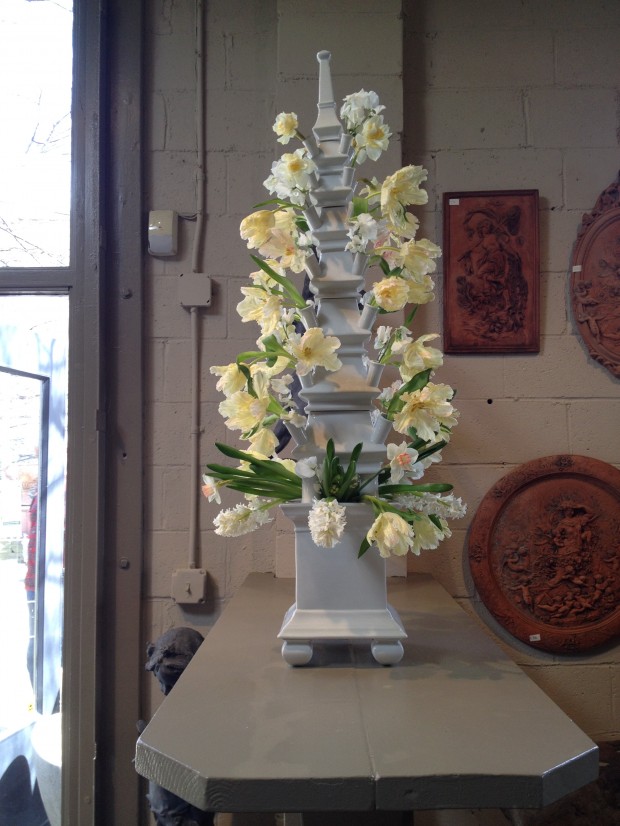
As for my tulipiere, Jody did an incredible job of arranging flowers in it. Cream parrot tulips, white hyacinths and white sweet peas.
 Spring comes in a lot of different forms. Every gardener in a northern zone is waking up. My tulipiere, full of tulips, sweet peas and hyacinths-a breath of spring. Fresh and sweet. I can smell the spring coming. Thanks, Jody.
Spring comes in a lot of different forms. Every gardener in a northern zone is waking up. My tulipiere, full of tulips, sweet peas and hyacinths-a breath of spring. Fresh and sweet. I can smell the spring coming. Thanks, Jody.
You can buy this tulipiere directly from the maker in the Netherlands:
Ruben Gerritsen | Heinen Delftware B.V.
Heinen Delftware BV
Nijverheidsweg 4V
3881 LA Putten
The Netherlands
Tel: +31 (0)341 362204
r.gerritsen@heinen-delftware.nl
www.heinen-delftware.nl <http://www.heinen-delftware.nl/>

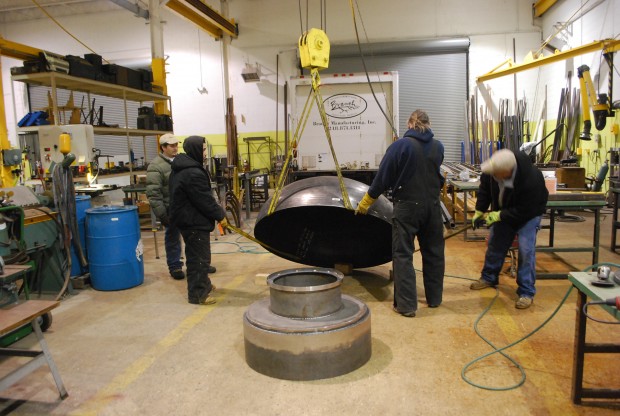
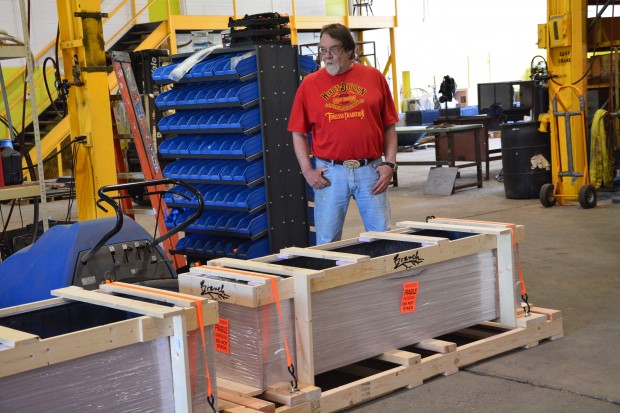
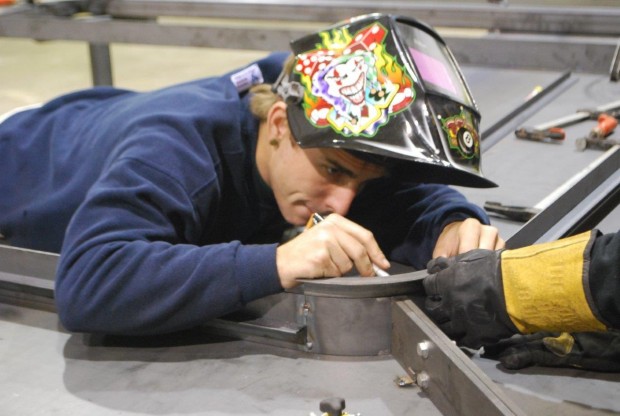


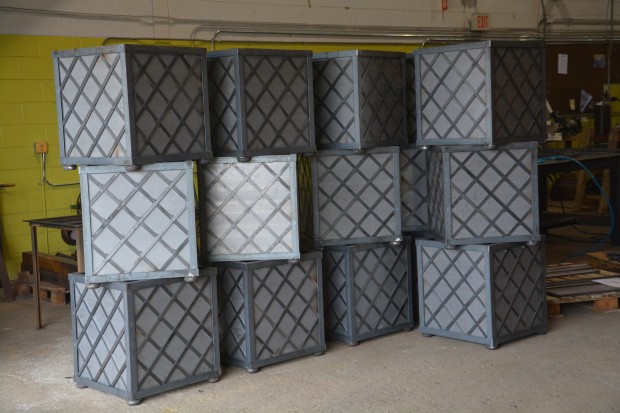


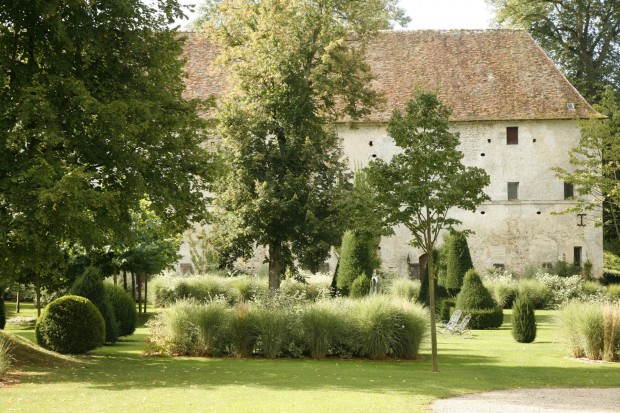

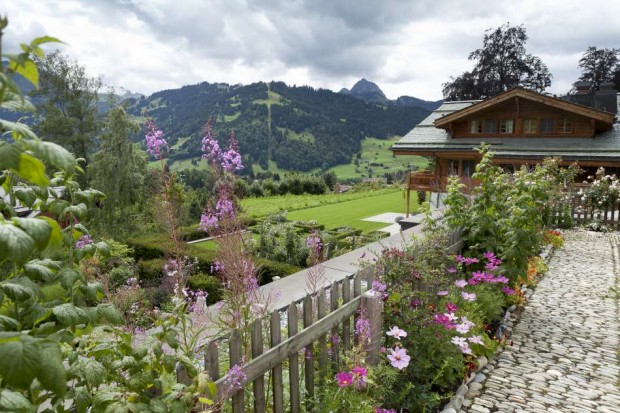




 Much of what I love about landscape design has to do with the notion of second chances. I have an idea. I put it to paper. I do the work of installing it. Then I wait for an answer back. This is the most important part of my work-to be receptive to hearing what gets spoken back. The speeches come from everywhere-the design that could be better here and more finished there. The client, for whom something is not working well, chimes in. The weather, the placement and planting final exam test my knowledge and skill. The land whose form is beautiful but whose drainage is heinous teaches me a thing or two about good structure. The singing comes from everywhere. I make changes, and then more changes. I wait for this to grow in and that to mature. I stake up the arborvitae hedge gone over with ice, and know it will be two years or more-the recovery. I might take this out, or move it elsewhere. That evolution seems to have a clearly defined beginnings, and no end.
Much of what I love about landscape design has to do with the notion of second chances. I have an idea. I put it to paper. I do the work of installing it. Then I wait for an answer back. This is the most important part of my work-to be receptive to hearing what gets spoken back. The speeches come from everywhere-the design that could be better here and more finished there. The client, for whom something is not working well, chimes in. The weather, the placement and planting final exam test my knowledge and skill. The land whose form is beautiful but whose drainage is heinous teaches me a thing or two about good structure. The singing comes from everywhere. I make changes, and then more changes. I wait for this to grow in and that to mature. I stake up the arborvitae hedge gone over with ice, and know it will be two years or more-the recovery. I might take this out, or move it elsewhere. That evolution seems to have a clearly defined beginnings, and no end.